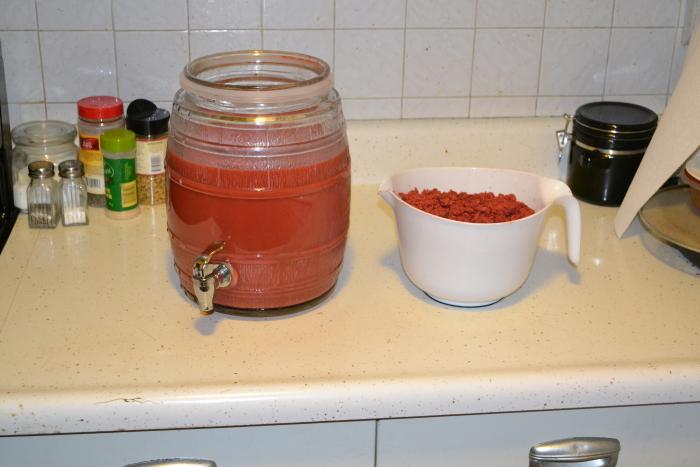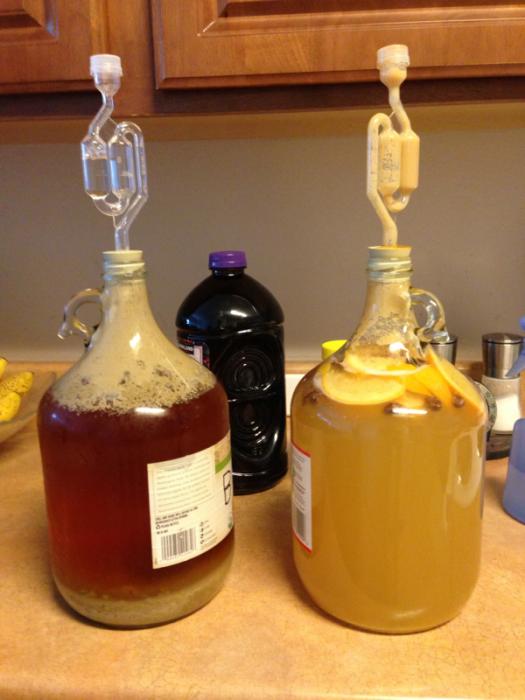Hope I'm not repeating something that's been covered to death, but search didn't show much gallon pickle jars. Last year there was one thread on a pickle jar fermenter:
https://www.homebrewtalk.com/f11/diy-fermenter-cheap-347438/
I thought I'd follow up with my own experiences.
Looks like the original poster on that thread was using the same Mt. Olive gallon pickle jars that I've used. My grocery has been having them on sale for something like $3.50 each which is a tremendous bargain.
General observations:
The total volume is actually just a shade over 1 gallon, but realistically you want to put in about 3 quarts to 3.25 quarts of wort to leave enough head room for krausen.
I haven't gone the airlock route, just left the lid slightly loose, and that seems sufficient to let CO2 out but keep bugs out. The poster of the earlier thread went with an airlock, but I'm fine without it. After fermentation settles I can just screw the lid on tight if I want to let things go a little longer, for instance for cold crashing.
The earlier poster mentioned sunlight to kill the pickle smell in the lid. I left mine in bright sunlight for a 4-5 days and that's effective, although before that I ran a stainless steel spoon over the inside of the lid which really helped knock the smell down initially (FYI, stainless steel is also good for getting garlic smell off your hands).
I was worried at first that some of the pickling bacteria might stay behind in the lid, but that hasn't seemed to be an issue.
You get about 7-8 12 oz. bottles out of each jar. The max I've done at one time is 4 jars, which translated into 30 bottles. For experimenting or beers that I don't necessarily want a full 5 gallon batch, they're great. For example, I'm not a huge Belgian fan, but I made a 1.5 gallon batch with two jars that was just right. I also tried out several different English yeasts on the same base bitter recipe spread over 3 jars, and it was very easy. I'm thinking of making a small pumpkin spice batch for October, and again, a couple or three of these would be just right.
They're super easy to clean. Unlike a gallon juice bottle, the neck on these things is so wide I'd bet Andre the Giant could have gotten his hand inside. Getting rid of trub and krausen residue is incredibly easy. And you don't have to worry about scratching them.
I don't think the lids are going to last a really long time. I think they're going to rust at some point, and I'll need to figure out an alternative -- maybe sanitized foil, maybe big old rubber stoppers, maybe something cut out of silicone cutting boards, or just a piece of acrylic.
One plus is that I don't have a fermentation cooler, but it's very easy to stick up to 4 of these in a cooler with some ice packs to maintain low 60s during the summer. And when I cold crash, it's easy to stick a couple at a time in the fridge to drop the temperature into the 30s.
Also, top cropping yeast is extremely easy since the jar mouth is so wide. Lots of room for a sanitized spoon.
I can see how the lid issues may steer some people away from these, but I think for a lot of people, they're a great way to go, especially at such a low price.






